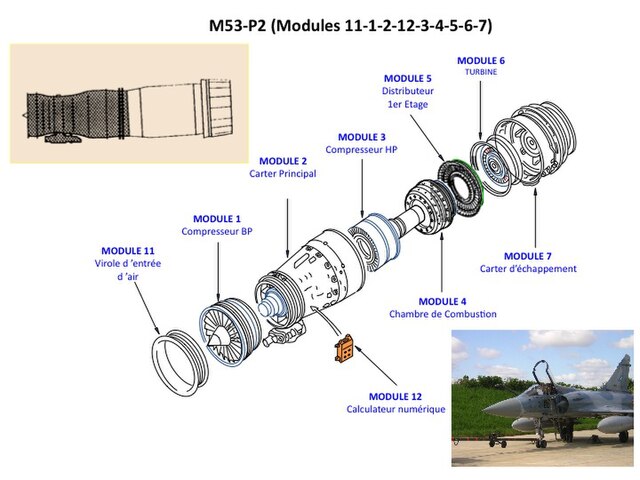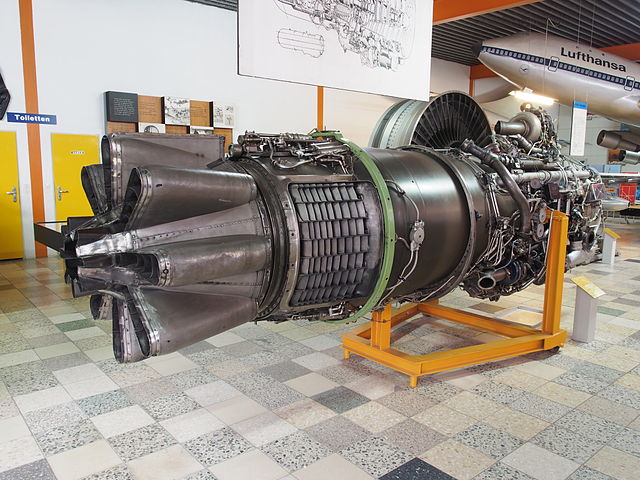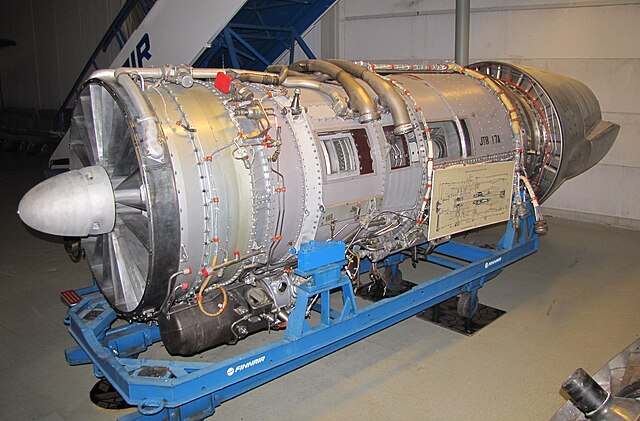The SNECMA M53 is an afterburning turbofan engine developed for the Dassault Mirage 2000 fighter by Snecma. The engine is in service with different air forces, including the latest Mirage 2000-5 and 2000-9 multirole fighters.
Snecma M53
Nozzle of an M53 installed in a Mirage 2000B
Modules of M53 engine
A turbofan or fanjet is a type of airbreathing jet engine that is widely used in aircraft propulsion. The word "turbofan" is a combination of the preceding generation engine technology of the turbojet, and a reference to the additional fan stage added. It consists of a gas turbine engine which achieves mechanical energy from combustion, and a ducted fan that uses the mechanical energy from the gas turbine to force air rearwards. Thus, whereas all the air taken in by a turbojet passes through the combustion chamber and turbines, in a turbofan some of that air bypasses these components. A turbofan thus can be thought of as a turbojet being used to drive a ducted fan, with both of these contributing to the thrust.
Chevrons on an Air India Boeing 787 GE GEnx engine
Rolls-Royce Conway low-bypass turbofan from a Boeing 707. The bypass air exits from the fins, while the exhaust from the core exits from the central nozzle. This fluted jetpipe design is a noise-reducing method devised by Frederick Greatorex at Rolls-Royce
General Electric GEnx-2B turbofan engine as used on a Boeing 747–8. View into the bypass duct looking forward from the bypass nozzle and showing fan exit stators/fan blades
The widely produced Pratt & Whitney JT8D used on many early narrowbody jetliners. The fan is located behind the inlet guide vanes.







